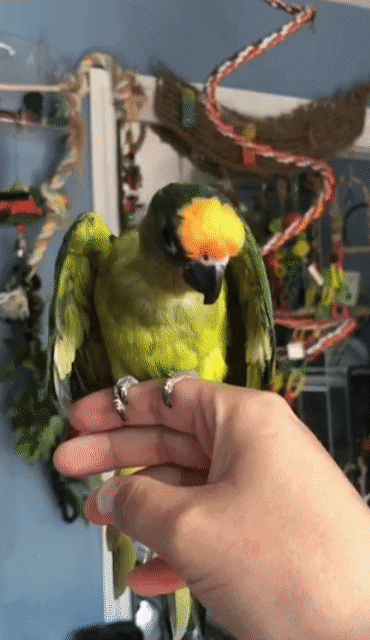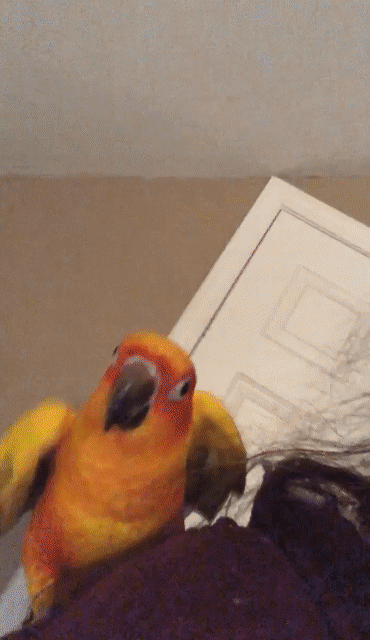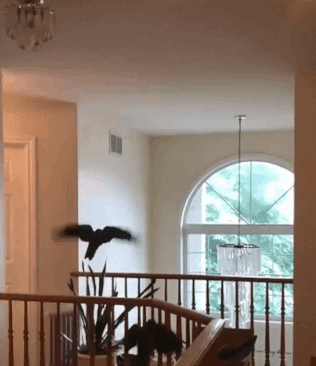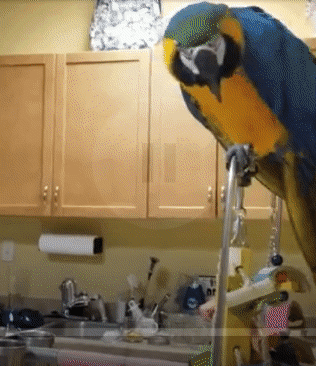“Should I Clip My Bird’s Wings?”: An Overview
First of all, I would like to thank you for your interest in learning more about the importance of flight and the effects of wing clipping. This is a controversial topic (to put it lightly), and I appreciate those who are willing to research it. Countless bird owners have no information about flight and wing clipping beyond a simple yes or no. It is my mission to provide you with real information, based on avian biology and behaviour, so that you will be confident in answering the question at hand: “Should I clip my bird’s wings?” Check the bottom of this page for a video that discusses many of the points covered in this article.
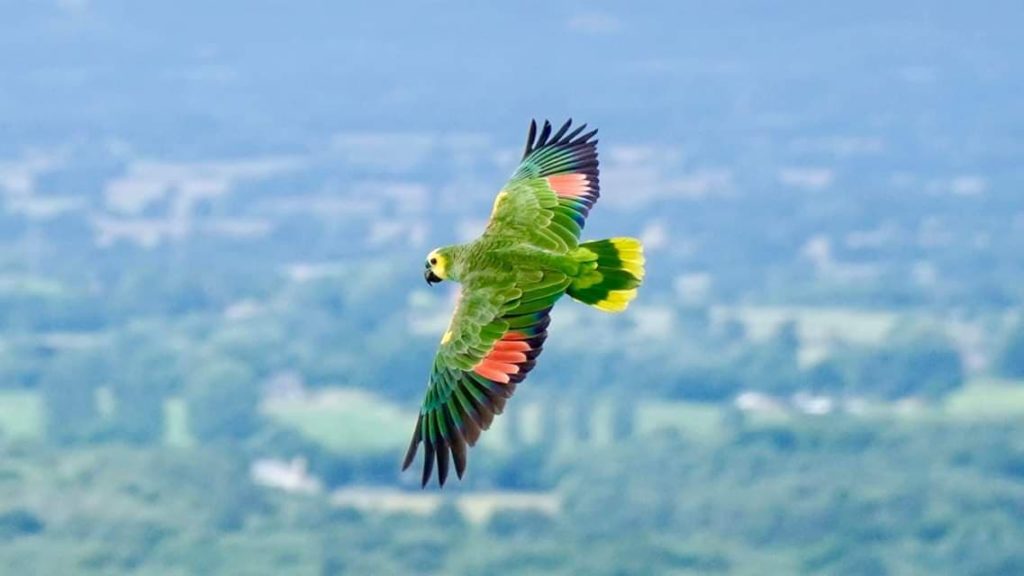
Does an animal perfectly adapted to using flight as its primary means of locomotion suffer no consequences when this ability is taken away or severely restricted? Is wing clipping really necessary to keep these birds safe in captivity, or is that belief based on old-fashioned assumptions and a lack of information? Moreover, and more controversially: is it cruel to clip a bird’s wings? Credit: Monika of PH&FF UK.
In order to answer whether or not a parrot should have its wings clipped, it is necessary to address some of the misconceptions concerning the practice of wing clipping. One of the most widely circulated myths in the bird world is that clipping a parrot’s wings is temporary and harmless, just like a haircut or a nail trim. It is, however, completely inaccurate to compare wing clipping to a haircut or a nail trim. Even though flight feathers do grow back (in most cases), that is where the similarity ends. Clipping a bird’s flight feathers alters the aerodynamic shape of their wings, which directly affects their mobility. A bird relies on its wings for normal movement, transportation, and exercise–we don’t rely on our hair or nails for any of those things.
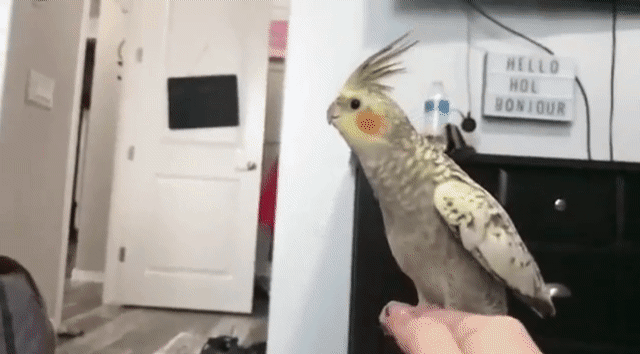
Clipping disrupts a bird’s ability to move in the way its instincts tell it to. A clipped bird does not fly because its muscles are too weak, it has learned that flight is too difficult, or it never learned to fly during early development. Credit: Alicia K.
Furthermore, the amount of time it takes for a bird to fully moult and replace clipped feathers is grossly misrepresented. Many people seem to think that clipped feathers will grow back in a couple of months when, for most species, it takes at least several months. For the larger species, it can take over a year. This is not just a matter of waiting for feathers to grow back, either. A bird who doesn’t fly can’t exercise its flight muscles, meaning they will become extremely weak during that period of disuse. Clipped birds tend to learn that attempting flight results in falling and are reluctant to try it again in the future. Clipping a bird’s wings has implications that go far beyond the feathers themselves.
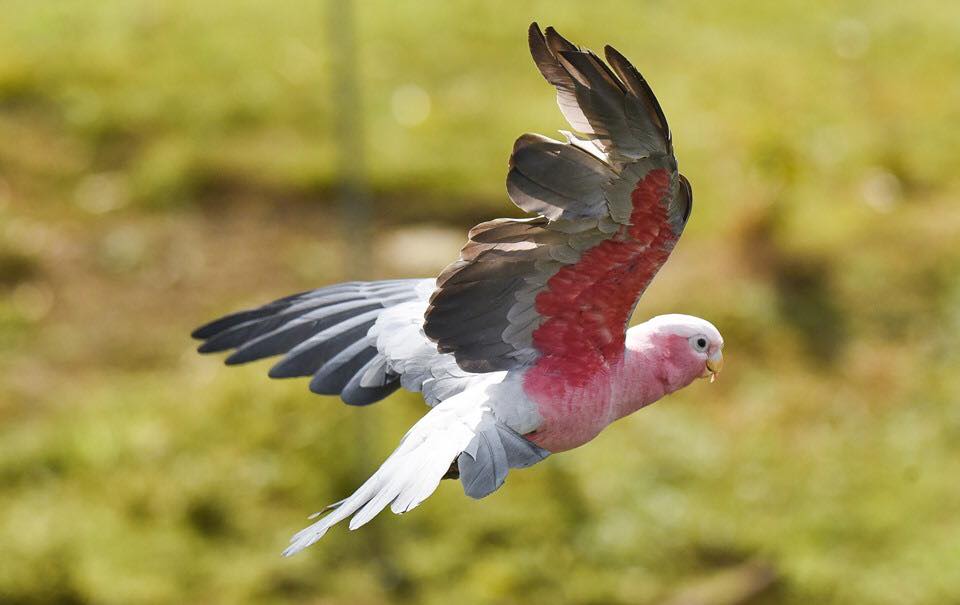
Two years after his wing was clipped, this galah is still missing four flight feathers. The fact that he has been rehabilitated to flight is a product not only of time, but of his owner’s efforts to teach him. “They grow back” is a vague and misleading statement which prevents bird owners from understanding the true nature of wing clipping. Credit: @stephbiggsphotography on Instagram and Facebook.
Parrots, whether born in the wild or in captivity, have the same biological impulse to fly. Their brains, bones, muscles, organs, and entire bodies are structured specifically for flight. Restrict or eliminate flight and the bird is no longer able to move in a biologically appropriate way. Thus, in clipping a bird’s wings, we are assigning it a tangible, bodily disability with which it was not born. This disability has unfortunate consequences for both physiological and psychological well-being. Indeed, more and more exotic and avian veterinarians are gradually moving away from clipping for this very reason, preferring to educate bird owners on the care of flighted birds instead. The Ark Veterinary Clinics in Scotland does not clip or trim wings, stating that “wing clipping is unnecessary and can lead to serious long term behavioural and medical problems”. Both The Center for Avian & Exotic Medicine in New York and Brisbane Bird Vet in Australia do not recommend clipping/trimming wings as a part of routine care and instead advocate for providing bird owners the information they need to give flight proper consideration.
Another common myth is that wing clipping is necessary for the safety of pet parrots. It may be true that clipping is necessary for the safety of certain parrots in certain situations, but these cases fall under extreme exceptions, not standard bird care. These cases don’t mean that clipping is necessary for your bird, or even most birds. Birds who crash into things when they try to fly typically do so because 1.) they never learned how to fly previously, 2.) they are in a state of utter panic, or 3.) their wings are clipped but they can still fly clumsily. This leads some bird owners with good intentions to think that flight in the home is inherently dangerous. I explain how to address these difficulties here.
If a bird is clipped, the age at which it is clipped, the amount of time it is kept clipped for, and the type of clip will all determine how it is affected. Clipping a bird before it fledges (learns to fly as a baby) can negatively impact the development of its brain, vision, motor skills, bones, behaviour, and flight ability later in life. A baby bird, clipped or confined to a small cage at the age it should be flying, exploring, and problem-solving, is receiving unnecessarily low levels of exercise and enrichment. Worse yet, it can be very difficult for a bird to learn to fly once this sensitive period of development has passed. A growing number of avian veterinarians and reputable breeders, even ones who may approve of clipping in other circumstances, do not recommend that people clip baby birds before they learn to fly. Unfortunately, this is standard practice at many establishments which sell birds. As someone who has seen the effects of this practice firsthand, I strongly advise that you do not support establishments which clip birds before or during fledging.
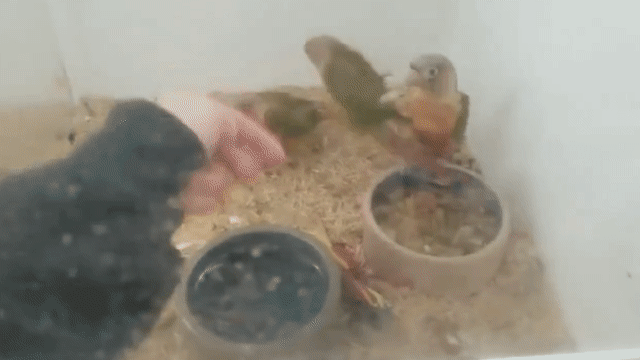
This type of enclosure, though very common at many bird stores, is not appropriate for birds this age. These birds are past the age they would have learned how to fly in the wild. They should be receiving a high degree of mental and physical stimulation in order to encourage optimal development, but they have had their wings clipped and are confined to a cubicle with at least two opaque walls. Customers who have been told that the birds are “hand-raised and tame” reach in to interact with them, but they flee. Not only are these birds afraid of humans, they are physically disabled so that they can be held by their new owners despite their fear. Credit: Anonymous contribution.
Birds who remain flightless for extended periods of time (whether through clipping or confinement), will have atrophied muscles and can be at an increased risk for obesity, heart disease, and liver disease due to lack of exercise. A bird who is flight-restricted usually has very little choice or control in its life; this can lead to stress and psychological issues. For some birds, clipped wings can act as a gateway to plucking behaviour, whether due to irritation from the sharp ends of the cut feathers, frustration due to restricted mobility, or a combination of both. Fortunately, most birds in this situation can learn to fly, but they need to be rehabilitated, much like a person who has not walked for an extended period of time.
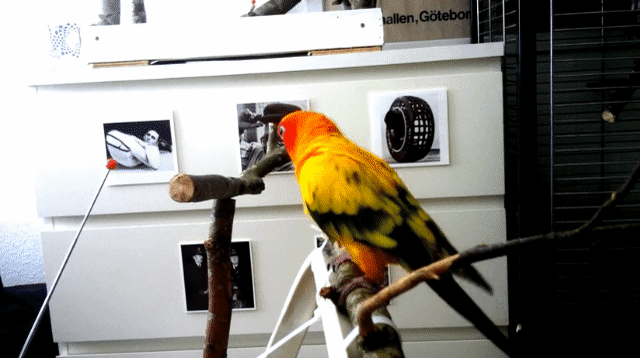
This sun conure needs help with learning how to fly. His owner is using a target and two perches which can be incrementally separated. As you can see, for a previously flight-restricted bird, even making a small hop proves challenging. If a bird does not learn to fly at the natural age and misses that developmental milestone, they must be taught, not unlike a feral child who walks on all fours must later be taught how to walk on two legs. Likewise, if a bird’s muscles are atrophied from disuse, they must be gradually strengthened. Credit: Anne Mahler on Youtube.
Although it is still a very common sight, a clip to all or most of a bird’s primary feathers, which intends to completely prevent flight, is being discouraged more and more by veterinarians. Birds clipped in this manner crash to the ground when they try to fly, sometimes injuring themselves. Doing this to a bird teaches it not to fly through the pain and frustration it experiences when it falls, and it forces it to become totally dependent upon a human to move it from place to place. A bird who can’t fly to get away from things that make it uncomfortable or frightened may learn that biting is the only way it can respond to those things. Sadly, this type of clip is still widely performed by some pet stores, breeders, and even veterinarians.
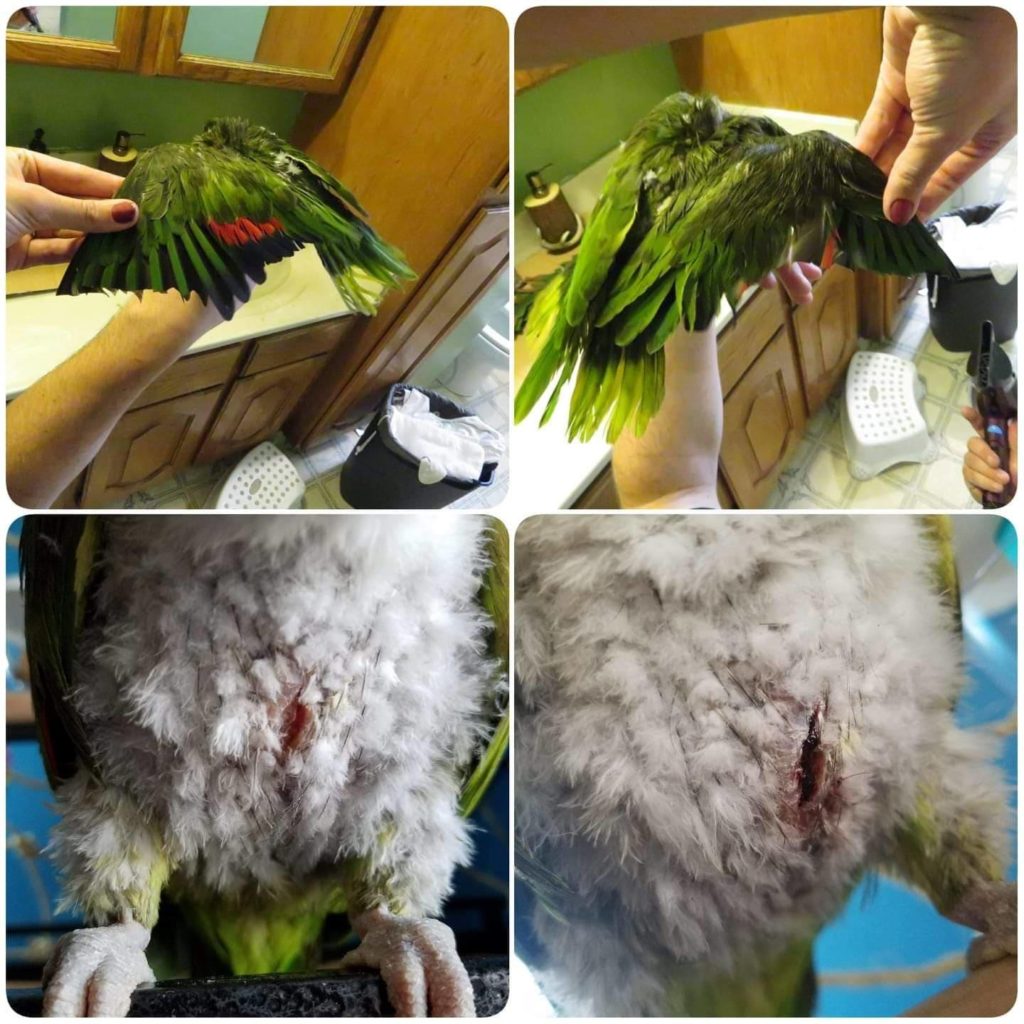
This bird was adopted with clipped wings. She repeatedly split her keel open over the course of several months by attempting to fly with such a severe physical handicap. After the pain and frustration she experienced doing this, she stopped attempting to fly. The exact cause of her plucking behaviour is unknown, but denying an animal its normal movement is certainly no help in resolving psychological issues. Credit: Chelsie S.
Another type of clip, which is more humane and more often recommended by veterinarians when compared to the full clip, is a partial clip which allows short distance flight. The problem with such a clip is that it does not allow a bird to reach optimal flight skill and fitness, but it does allow them to fly into harm’s way due to minimal control or out of the house if someone is careless. This “half clipped” state makes for a bird who can fly a bit in the house but is immediately disadvantaged once outside. Additionally, clipped and partially-clipped birds display an unnatural posture when in flight. Whether this posture may, over the course of years, affect their spine and cause discomfort has not been studied, but it is certainly something to consider. What if we were always carrying a heavy burden on our backs and walked stooped over as a result? Yes, we might be “working harder”, but the burden would force us into an unnatural posture.
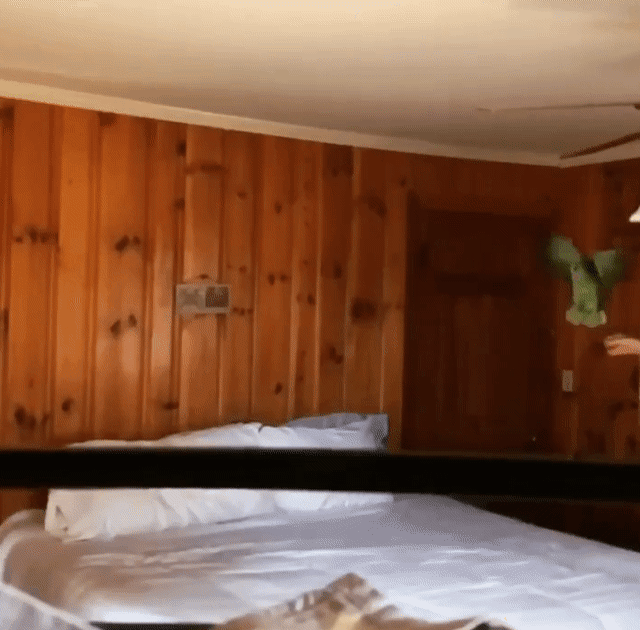
Speaking of posture: flight restriction can have lasting effects on the way a bird flies. This amazon was confined to a dog kennel. She was not clipped, but she could not fly. After a year with her new owners, flight is still difficult, she still leans to one side, coordinating landings is still a challenge, and she is still not confident enough to attempt flight on her own. In some ways, particularly where physical fitness is concerned, clipping a bird is similar to keeping it in a cage. Credit: Kim Martin.
So why clip at all? The reason most commonly provided is “safety”. But birds can learn how to fly safely indoors, and the ability to fly also means the ability to anticipate certain threats and avoid them. A few changes might need to be made to the home environment in order for a bird to fly safely, but they are not too many or too difficult. (No, it is NOT common for windows and mirrors to need to be permanently covered when owning flighted birds!) Regardless of what pets we keep, we will always need to modify our homes to some extent in order to keep those pets happy and healthy. Birds are no different. Cats and dogs can slip out of the house if we don’t pay attention, but we wouldn’t think of taking their mobility from them. We simply take preventative measures and train them so that they will be safer in the event of an accidental escape.
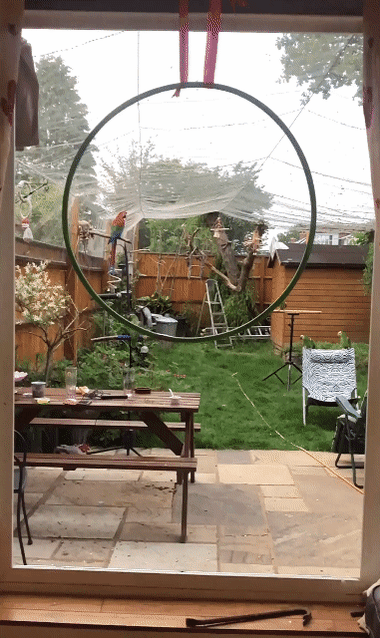
These birds are trained to come when called. While flying through a hoop is a fancy addition to the behaviour, recall is actually very easy for a parrot to learn. Credit: Monika and Richard of Parrot Harness and Free Flight UK.
Furthermore, the false sense of security people feel when their birds are clipped can lead to those same birds being lost. Even totally clipped birds can achieve some flight when they are frightened and survival instincts take hold. With the help of the wind, they can be carried even further afield. On the 911 Parrot Alert Facebook group for lost birds, you can read posts by sorrowful owners who thought that their birds would not be able to fly far, or at all, due to their clipped wings, and lost them as a result. A clipped bird, depending upon the severity of the clip, is often stuck where it lands once the initial fright is over. Because of its compromised flight ability, it is an easier target for predators, and it is less capable and confident with descending from on high to reach its owner. In the home, clipped birds can still startle and crash or fall into harm’s way; they retain very little control over their flight speed or trajectory. In short, safety precautions and training are far more reliable than a wing clip in keeping most birds safe.
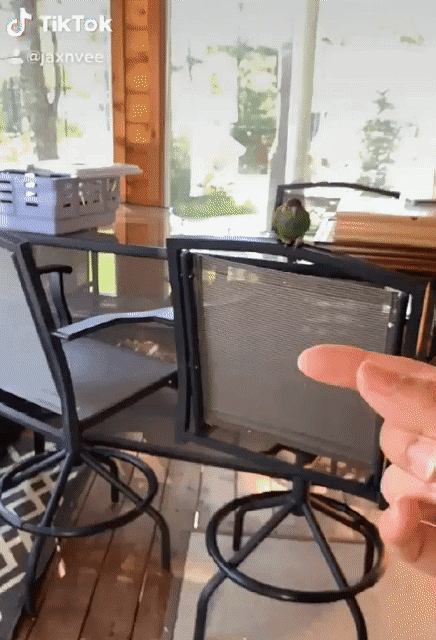
Some birds find a way to compensate for their clipped wings, but being able to fly a short distance does not mean that they are strong or skilled flyers. If these birds find themselves outside, they will have extreme difficulty controlling their flight, adjusting for the wind, and descending. They will also be easier targets for predators. Credit: @jaxnvee on TikTok.
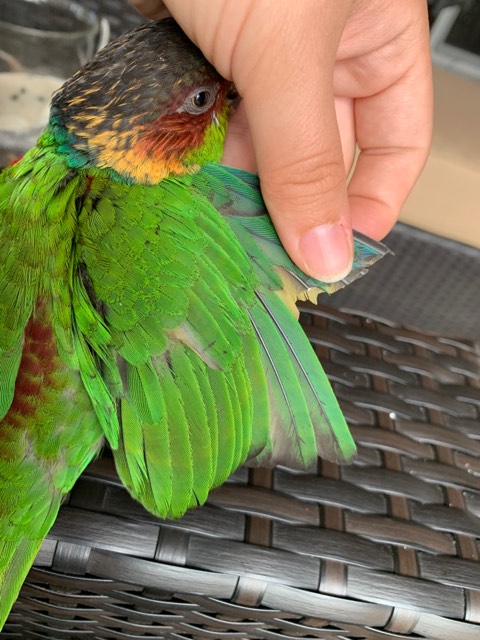
Clipping is far more complex than most bird owners realise. Some people clip to hinder flight. Some people clip to prevent flight altogether. Some birds (usually smaller birds) retain flight ability even with severe clips. Some birds stop attempting flight even with modest clips. There is no “proper clip”; this is a fantasy we humans chase as we grapple with the reality that birds are born to fly. Credit: @jaxnvee on TikTok.
I have taken great pains to gather research and scientific support for the argument that captive parrots derive a substantial–even crucial–benefit from flight, and that it is moreover unethical to deprive these animals of the locomotion dictated by their biology. Some people ask, “Is wing clipping cruel?” I believe a better question to ask would be, “Is it reasonable to take away an animal’s ability to move and exercise normally?” As you read my website, I believe you will arrive at an answer for yourself. Each of the topics listed within the sidebar menu reveals a different piece of the “flight vs. clipping” mosaic, each important in its own way.
If, after all is said and done, you still decide to clip your bird’s wings, please be sure to have the procedure performed by a knowledgeable avian veterinarian or technician who understands the important role flight plays for parrots. They will be able to perform a clip that is more humane whilst addressing your concerns; an individual who does not understand or value flight may perform an extreme clip that leads to the more serious physical and mental health issues discussed here on this site. Thank you for taking the time to read this overview, and please let me know if you have any questions or concerns about pursuing flight with your bird.

It’s great to have options! Indoor flight, aviary flight, and harness training are all ways in which we can safely accommodate our birds’ natural volancy. Credit: @birds_of_colours on Instagram.
(Note: A relatively small number of birds are diagnosed with medical conditions which legitimately make flight unsafe or which necessitate limiting a bird’s flight; my arguments are not directed at these exceptional cases.)
To learn more about the importance of flight, click here!
Additional Resources
The above video offers personal perspectives from ten different bird owners who have chosen to keep their birds flighted, including some who used to clip wings.
This essay by Steve Hartman of The Parrot University explores how flight influences brain development and activity. He also describes six main areas where flight is important to parrots: https://www.aviatorharness.com/blog-feed/fully-flighted-birds
This presentation by avian and exotic veterinarian Dr. Anthony Pilny discusses the importance of flight for pet parrots, along with a myriad of other important bird care principles: https://youtu.be/O4QA29NQMOs?t=4524
This webinar by certified parrot behaviour consultant Pamela Clark discusses the importance of flight for pet parrots, along with a myriad of other important bird care principles: https://youtu.be/rZ4sGh6NGK8?t=5959
This overview on the importance of flight by certified parrot behaviour consultant Greg Glendell also explains the parrot moult cycle: https://spring2017.iaabcjournal.org/birds-need-fly/
This excellent blog series by Pamela Clark, certified parrot behaviour consultant, discusses the importance of flight for birds and how to safely accommodate flight: Part 1 | Part 2 | Part 3 | Part 4 | Part 5 | Part 6
This webinar on flight training by professional animal trainer Barbara Heidenreich includes discussion on the effects of wing clipping: https://vimeo.com/ondemand/parrotflight?fbclid=IwAR0MakWA-Cd5SLnCDWyLpN3aYT-L3B-1MqZEp4jHxMFKZ9q2qKNlS9c7lvk


